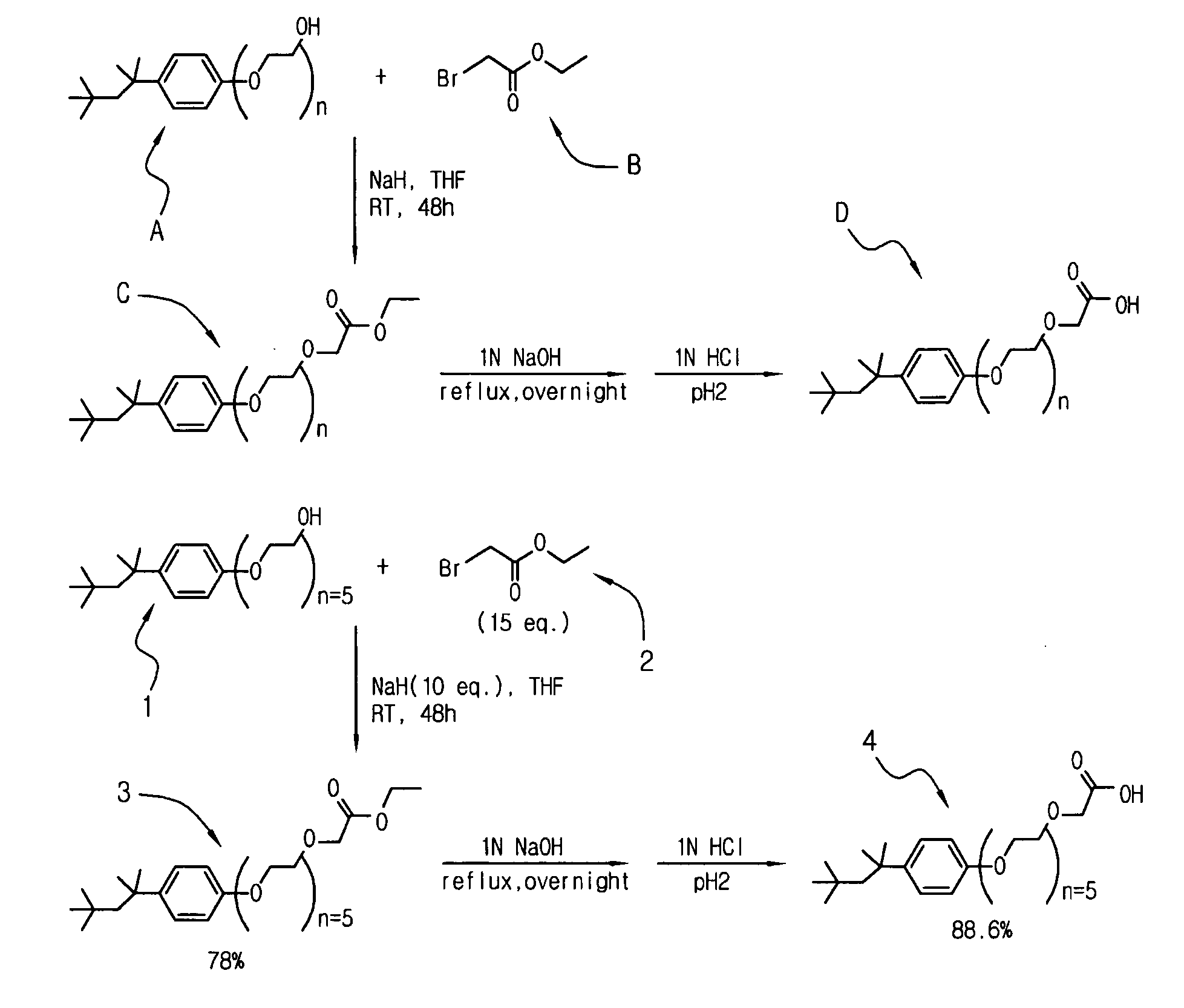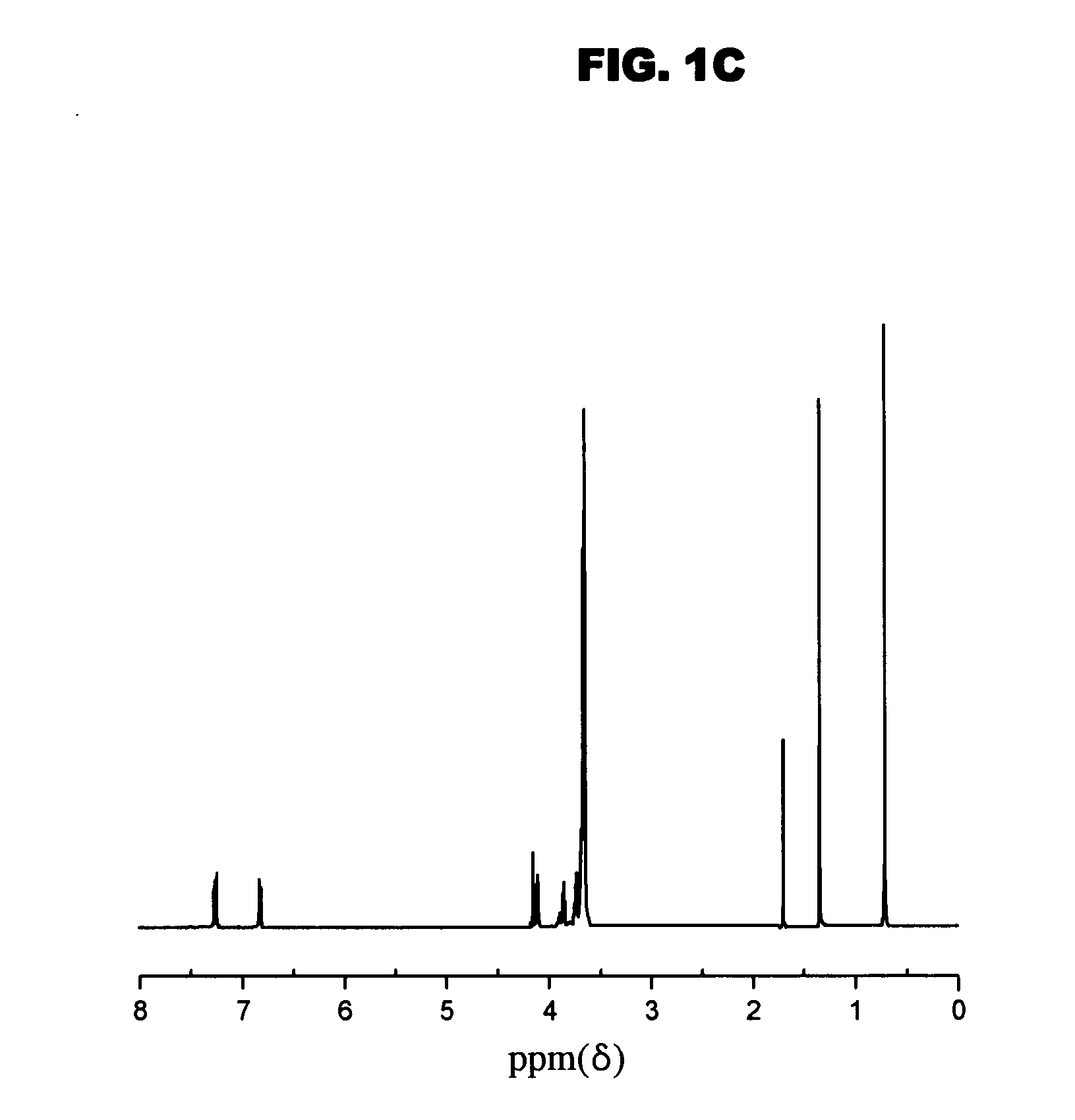Carboxylic ester dispersant and sulfide phosphor paste composition having same
a technology of phosphor paste and ester, which is applied in the direction of oxide conductors, tubes with screens, non-metal conductors, etc., can solve the problems of difficult uniform formation of phosphor films, increase in viscosity, and deterioration of luminescent properties of display, so as to improve the dispersibility of sulfide phosphor paste composition and prevent oxidation
- Summary
- Abstract
- Description
- Claims
- Application Information
AI Technical Summary
Benefits of technology
Problems solved by technology
Method used
Image
Examples
example 1
[0049] Commercial SrGa2S4 powder (KX501A obtained from Kasei Optonix Ltd. Japan) was used as a phosphor. The phosphor powder was vacuum dried at 130° C. for 24 hours before use. A mixed solvent comprising a mixture of 4.61 g of alpha-terpineol and 7.68 g of butyl carbitol acetate was prepared. A binder solution, in which 0.51 g of ethyl cellulose was dissolved in the mixed solvent, was prepared using the mixed solvent. The phosphor powder was added to the resulting binder solution, the carboxylic ester dispersant of Formula 2 was added thereto, and milling was conducted to produce the phosphor paste composition of the present invention.
experimental example 1
Evaluation of Viscosity Change of the Phosphor Paste Composition
[0053] A phosphor (SrGa2S4 powder) was added to a binder solution (including the dispersant) which was the same as that of example 1 to prepare a phosphor paste composition. The change in viscosity was measured while the shear rate was increased, and the results are shown in FIG. 2. In connection with this, the viscosity was measured using a viscometer (AR2000, Thermal Analysis Corp., USA), and the change in viscosity depending on the shear rate was measured using a No. 14 spindle under measurement conditions in which the temperature was 24.5-25.5° C. and the measurement time was 30 sec. The phosphor pastes of Comparative Examples 1 to 3 were produced for a comparison, changes in their viscosities depending on the shear rate were measured, and the results are shown in FIG. 2. Moreover, the phosphor pastes of Example and Comparative Examples 1 and 4 were produced, changes in their viscosities were measured depending on ...
experimental example 2
Evaluation of Viscoelastic Properties of the Phosphor Paste Composition
[0056] The relationship of tangent delta values (δ) to angle frequencies (rad / s) of phosphor pastes of example 1 and Comparative Examples 1 and 4 are shown in FIG. 4. Tangent delta (δ) is G″ / G′, viscous coefficient / elastic coefficent. The tangent delta (δ) of the phosphor paste composition of Example 1 was still higher than that of the phosphor paste composition of Comparative Example 1. A kinetically movable space was large in a nicely dispersed suspension but small in a suspension in an agglomerated state. When the dispersant of the present invention was added, more kinetically movable spaces were formed in comparison with those of Comparative Examples. Thus it can be seen that the dispersibility of the phosphor in the phosphor paste composition was improved.
PUM
| Property | Measurement | Unit |
|---|---|---|
| pH | aaaaa | aaaaa |
| thickness | aaaaa | aaaaa |
| hydrophilic | aaaaa | aaaaa |
Abstract
Description
Claims
Application Information
 Login to View More
Login to View More - R&D
- Intellectual Property
- Life Sciences
- Materials
- Tech Scout
- Unparalleled Data Quality
- Higher Quality Content
- 60% Fewer Hallucinations
Browse by: Latest US Patents, China's latest patents, Technical Efficacy Thesaurus, Application Domain, Technology Topic, Popular Technical Reports.
© 2025 PatSnap. All rights reserved.Legal|Privacy policy|Modern Slavery Act Transparency Statement|Sitemap|About US| Contact US: help@patsnap.com



